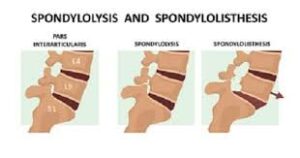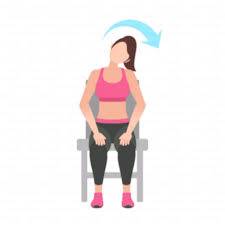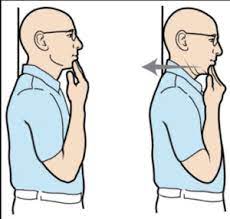If you have been diagnosed with spondylolisthesis, you may be wondering about your treatment options. Fortunately, there are a number of non-surgical treatments available that can help relieve your symptoms and improve your quality of life. In this blog post, we will discuss the different treatment options available to you and how physical therapy can help you get back to living your life without pain.
Contents
- 1 What Is Spondylolisthesis?
- 2 What Causes Spondylolisthesis?
- 3 What Are the Symptoms of Spondylolisthesis?
- 4 Can Physical Therapy Help In Spondylolisthesis?
- 5 What Type Of Physical Therapy Helps in Spondylolisthesis?
- 6 How Long Is The Physical Therapy For Spondylolisthesis?
- 7 What Are The Benefits?
- 8 What Exercises To Avoid In Spondylolisthesis?
- 9 What Are The Goals Of Physical Therapy For Spondylolisthesis?
- 10 Can Physical Therapy Help Prevent Surgery?
- 11 What Are The Risks?
- 12 Preventive Tips
- 13 Conclusion
What Is Spondylolisthesis?

Spondylolisthesis is a spinal condition that typically causes lower back pain. It happens when one of the bones in your spine, known as vertebrae, slips out of position and presses onto the vertebra below it. In most instances, symptoms can be soothed without surgery. If spondylolisthesis is severe, though, surgery usually works
What Causes Spondylolisthesis?
There are several possible causes of spondylolisthesis, including:
- A birth defect
- An injury
- Degenerative changes in the spine
- Tumors or infections
What Are the Symptoms of Spondylolisthesis?
Symptoms of spondylolisthesis can vary, depending on the severity of the condition. In some cases, there may be no symptoms at all. When symptoms do occur, they may include:
- Back pain
- Leg pain
- Stiffness in the back or legs
- Muscle weakness
Can Physical Therapy Help In Spondylolisthesis?
Yes, physical therapy can help patients with spondylolisthesis. The main goals of physical therapy are to relieve pain, improve the range of motion, and strengthen the muscles that support the spine. Physical therapists use a variety of modalities, including exercises, stretches, electrical stimulation, and massage, to achieve these goals.
One of the most important things that physical therapists do for patients with spondylolisthesis is to teach them how to properly support their spine. This includes proper posture and alignment when sitting, standing, and moving. Patients are also taught how to safely lift objects and how to perform common activities without aggravating their condition.
What Type Of Physical Therapy Helps in Spondylolisthesis?

Physical therapy helps in spondylolisthesis are as follows:
For children with spondylolisthesis, physical therapy may be recommended to help them maintain a healthy range of motion in their spine and prevent the condition from progressing. For adults with spondylolisthesis, physical therapy can help relieve pain and improve mobility. Physical therapy exercises may include:
Stretch and strengthening exercises
This help improves flexibility and range of motion in the spine, as well as strengthen the muscles that support the spine.
Aerobic exercise
This helps increase endurance and stamina. Walking, swimming, and biking are all good aerobic exercises to try.
Posture Correction Exercises
One of the most important things you can do to help relieve pain and improve your spine’s function is to maintain good posture. Poor posture puts extra stress on your spine, which can worsen pain and make it harder for your spine to heal. Exercises that help improve your posture include:
Shoulder shrugs

Stand up tall with your shoulders down and back. Slowly shrug your shoulders up to your ears, then release them back down.
Head tilts

Start by looking straight ahead. Slowly tilt your head to one side, then the other.
Chin tucks

Start with your head in a neutral position, looking straight ahead. Tuck your chin down so you’re looking at the floor, then release back to the starting position.
Pelvic tilts

Lie on your back with your knees bent and feet flat on the floor. Slowly tilt your pelvis up, then release it back to the starting position.
These are just a few examples of posture correction exercises. If you have spondylolisthesis, physical therapy can be an important part of your treatment plan. Physical therapy exercises can help relieve pain, improve mobility, and correct posture. A physical therapist can help create a personalized exercise plan for you.
How Long Is The Physical Therapy For Spondylolisthesis?
The duration of physical therapy for spondylolisthesis varies depending on the severity of the condition. For most people, however, physical therapy is typically recommended for a period of four to six weeks. During this time, patients will work with a physical therapist to learn exercises and stretches that can help to relieve pain and improve their range of motion.
What Are The Benefits?
The benefits of physical therapy for spondylolisthesis are as follows:
Reduces pain
Physical therapy can help to reduce the pain associated with spondylolisthesis by helping to stretch and strengthen the muscles and ligaments around the spine.
Improves flexibility
Physical therapy can also help to improve flexibility in the spine, which can in turn help to reduce pain.
Increases strength
Strengthening the muscles around the spine can help to take some of the pressure off of the spine and reduce pain.
Can prevent further injury
Physical therapy can help to correct any underlying issues that may be contributing to spondylolisthesis and help to prevent further injury.
Improves mobility
Physical therapy can help to improve mobility in the spine and help to reduce pain.
This prevents the condition from worsening
Physical therapy can help to prevent the condition from worsening by helping to correct any underlying issues and strengthening the muscles around the spine.
Return to normal activities
Physical therapy can help you to return to your normal activities by helping to reduce pain and improve mobility.
What Exercises To Avoid In Spondylolisthesis?
The exercises to be avoided in spondylolisthesis are as follows:
1. Extension exercises of the spine
2. Hyperextension exercises of the spine
3. Rotation exercises of the spine
4. Lateral bending exercises of the spine
5. Exercises that put excessive pressure on the lumbar spine
6. Excessive weight-bearing exercises
It is best to avoid any type of exercise which may put a strain on the lumbar spine. These exercises may aggravate the condition and lead to further injury. Instead, focus on strengthening the core muscles and flexibility exercises which will help take the pressure off the spine.
What Are The Goals Of Physical Therapy For Spondylolisthesis?
The goals of physical therapy for spondylolisthesis are to reduce pain, improve range of motion, and help the patient return to normal activity levels. Physical therapy can also help to prevent further injury by teaching patients how to properly protect their spine.
Can Physical Therapy Help Prevent Surgery?
In some cases, physical therapy may be able to help prevent surgery. By working with a physical therapist, patients can learn exercises and stretches that can help to relieve pain and improve their range of motion. If the goal of physical therapy is met, surgery may not be necessary. However, if the pain continues or worsens, surgery may be the only option.
What Are The Risks?
The risks of physical therapy for spondylolisthesis are generally low. However, as with any type of treatment, there are always potential risks and side effects. Some of the risks associated with physical therapy include:
1. Worsening of pain
2. Injury to the spine
3. Nerve damage
4. Muscle weakness
5. Joint stiffness
It is important to discuss all potential risks with your doctor or physical therapist before starting any type of treatment. This will help to ensure that you are aware of all potential risks and can make an informed decision about your care.
Preventive Tips
There are various preventive tips for spondylolisthesis:
- Maintain good posture and practice proper lifting techniques.
- Stay at a healthy weight to reduce stress on the spine.
- Avoid wearing shoes with hard soles.
- Use an over-the-counter arch support if you have flat feet.
- Use shoe inserts or orthotics if you have high arches.
- Avoid activities that require you to bend forward from the waist, such as gardening or housework.
- Do not lift heavy objects. If you must lift something heavy, bend your knees and keep your back straight.
- Do not sit in a slouched position.
- Use a lumbar roll to support
Conclusion
It may be concluded that physical therapy for spondylolisthesis can be an effective treatment option for patients with this condition. While there is no one-size-fits-all approach to treatment, physical therapy can help to improve symptoms and quality of life for many people with spondylolisthesis. If you are considering physical therapy as a treatment option for spondylolisthesis, be sure to consult with a physical therapist who has experience treating this condition.
Physical Therapy help patients recover from pain. If you’re experiencing Back pain, Shoulder pain, Knee pain, Neck pain, Elbow pain, Hip pain, or Arthritis pain, a physical therapist at MantraCare can help: Book a physiotherapy session.


